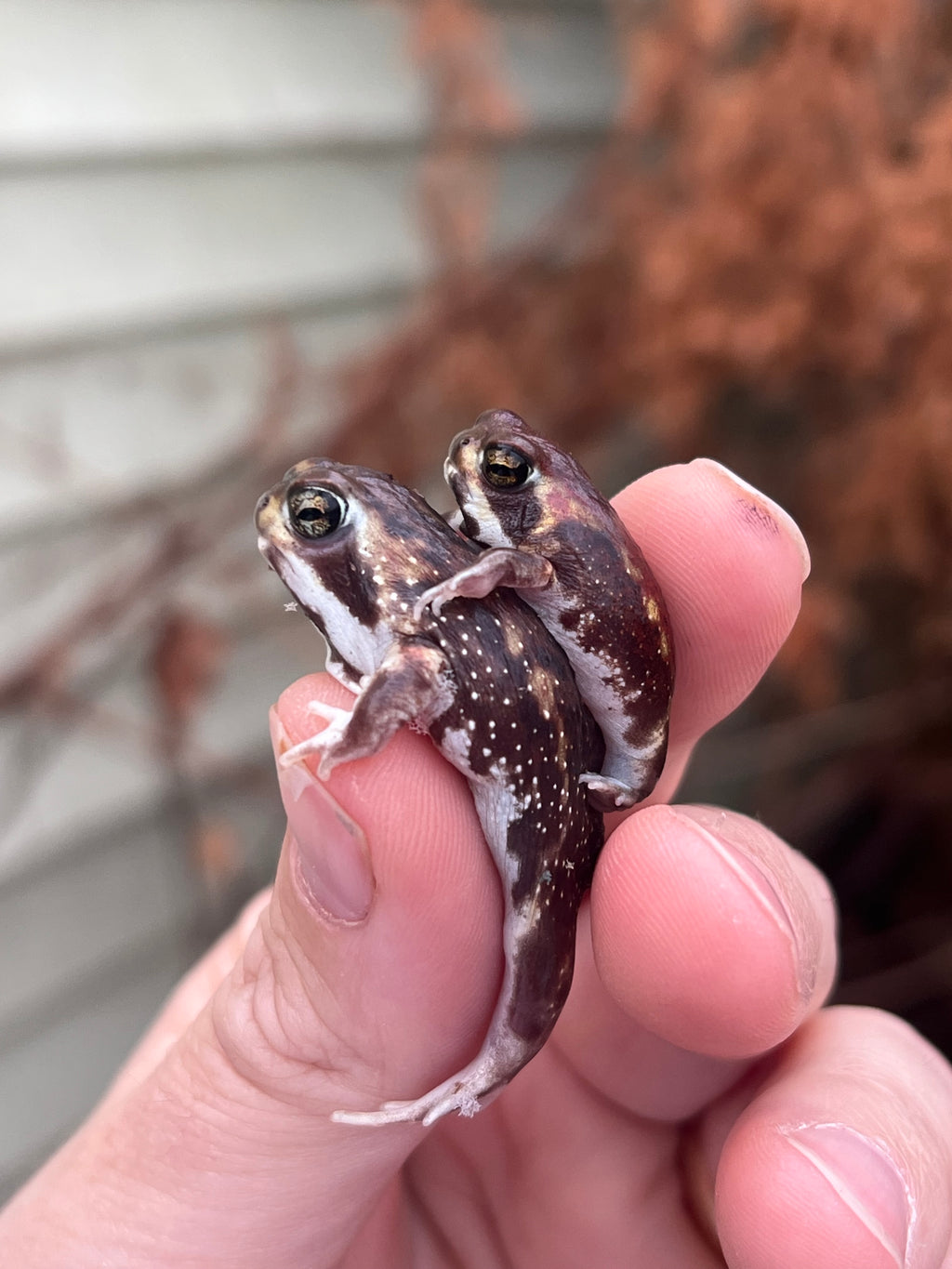Rain Frog for Sale: Elevate Your Collection with Rare and Exotic Amphibians!
Wiki Article
The Best Reptile Enclosures: How to Create the Ideal Habitat
Producing the ideal environment for reptiles is not almost putting them in a storage tank or room; it includes a thoughtful factor to consider of various factors that add to their overall well-being. From the dimension of the enclosure to the kind of substrate used, every element plays a critical role in providing an environment where your reptile can thrive. By understanding the specific requirements of your reptile types and carrying out the ideal habitat setup, you can guarantee their health and wellness and happiness in captivity.Picking the Right Room Size
When selecting an enclosure dimension for reptiles, it is critical to consider their all-natural habits and space demands to guarantee their health and health. Various reptile types have differing needs when it involves habitat space. Arboreal varieties like chameleons or tree snakes call for vertical space for climbing up and perching, while earthbound types such as bearded dragons or leopard geckos need even more floor room for exploring and thermoregulation. Aquatic turtles like red-eared sliders require enclosures with both water and acreage for swimming and basking.A basic rule of thumb is to provide sufficient space for the reptile to display all-natural habits, such as basking, concealing, climbing, and foraging. By very carefully thinking about the details needs of the reptile species in question, owners can create a suitable and enriching habitat that promotes overall well-being and encourages all-natural actions.
Establishing Up Correct Burner
To make certain the health and wellness of reptiles in their rooms, it is necessary to meticulously establish appropriate heating elements. Reptiles are ectothermic creatures, meaning they count on exterior warm sources to regulate their body temperature. When establishing burner in a reptile enclosure, it is essential to consider the details temperature level demands of the species you are looking after. Various reptiles have differing temperature needs based upon their natural habitat, so it is essential to study and comprehend these requirements.One efficient and usual heating component for reptile rooms is a warmth lamp or ceramic warmth emitter. These heat resources can be used to produce a temperature slope within the unit, enabling reptiles to relocate between warmer and cooler locations as needed. Furthermore, under-tank hot pad or warm floor coverings can be used to provide tummy warm, which is especially beneficial for reptiles that require extra warmth to aid in digestion.
Checking the temperature level within the room using a thermostat is necessary to make certain that the burner are keeping our website the ideal temperature range for your reptile. On a regular basis examine and adjust the heating elements as needed to produce a healthy and balanced and comfy setting for your flaky close friend.
Picking Appropriate Lighting Components

Offering the Suitable Substratum
Selecting the proper substrate is important for developing a ideal and comfy environment for reptiles in their rooms. Some reptiles, such as desert-dwelling varieties like bearded dragons, grow on substrates like calcium sand or reptile rug, while others, like sphere pythons, like coconut husk click over here or aspen bed linens to maintain moisture levels.Moreover, the dimension of the reptile need to also affect your option of substrate, as hatchlings might need a finer material to avoid ingestion. Stay clear of substratums that can cause impaction, such as loosened substrates like sand or crushed rock, particularly for reptiles known to consume their bed linen. Routinely cleansing and changing the substratum is important to ensure a sanitary and clean setting for great site your reptile. By choosing the excellent substrate, you can add to the general health and health of your scaly friend.
Designing for Enrichment and Convenience
Considering the substratum's duty in offering a structure for natural habits and maintaining an ideal environment, enhancing the reptile room with correct decorations is vital for both enrichment and convenience. Decors such as branches, rocks, hideouts, and synthetic plants not only develop an extra visually attractive environment yet likewise offer useful purposes. Branches offer climbing chances for arboreal species, while rocks can act as basking areas for warmth. Hideouts use shelter and safety, reducing tension levels for the reptile. Man-made plants not only improve the aesthetic appeals yet additionally provide hiding spots and enrichment by enabling the reptile to interact and explore with its environment. When decorating the unit, it is important to think about the reptile's species-specific needs and habits to create a space that promotes physical and psychological wellness. By integrating a range of decorations that imitate the reptile's natural habitat, owners can ensure their animal's comfort and boost their all-natural impulses, eventually causing a better and healthier reptile.Final Thought

Creating the best environment for reptiles is not simply concerning placing them in a storage tank or room; it entails a thoughtful consideration of various aspects that add to their total health.Picking the suitable substratum is crucial for creating a appropriate and comfortable atmosphere for reptiles in their enclosures. Some reptiles, such as desert-dwelling types like bearded dragons, flourish on substrates like calcium sand or reptile rug, while others, like sphere pythons, like coconut husk or aspen bed linen to keep humidity levels.
By integrating a range of designs that imitate the reptile's natural habitat, owners can guarantee their animal's comfort and boost their all-natural reactions, eventually leading to a better and healthier reptile.
In conclusion, developing the ideal habitat for reptiles includes choosing the appropriate enclosure size, home heating components, lighting components, substrate, and decorations.
Report this wiki page